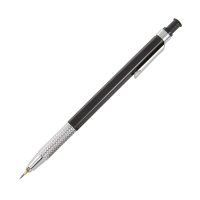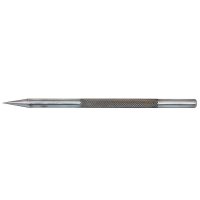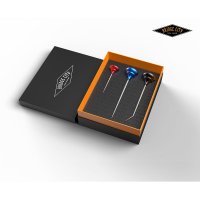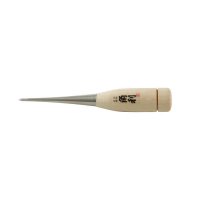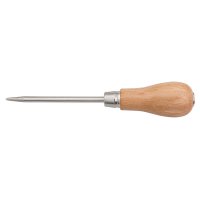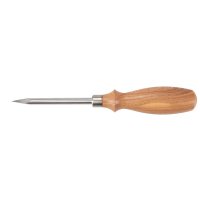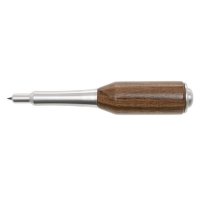
In our online course »Precise marking«, you will learn in detail about various marking techniques and different tools for measuring and marking. The tools are categorised into measuring instruments, marking tools, scribing tools, and inspection instruments. Beyond pencils and marking knives, there are numerous marking instruments that can be utilised for special tasks in the woodworking workshop. We present a selection of these in this article, which originates from the chapter »Marking tools« of the online course.
Scribers
Scribers (e.g. Precision Scriber) are a frequently used marking tool in metalworking. However, they are rarely used in woodworking workshops as they do not cut through the wood fibres as cleanly as a marking knife. They can be used for special tasks, such as marking or transferring small holes or scribing in recesses.
The tips of scribers are usually made of hardened steel. Scribers come in various shapes, straight or angled, with one or two points, as thin needles or as pens, including those with replaceable tips.
For scribing on metal, on softer materials (e.g. plastic, brass, copper, aluminium) a scribe line can be drawn directly with the tip. On harder surfaces, a thin layer of paint is often applied or sprayed to make the marking line more visible. To achieve an even and clean mark, the scriber is always drawn along a fence or ruler, not pushed.
Punch awl and bradawl
Both tools are very similar in appearance and nearly identical in construction. However, they differ in the shape of their tips.
Punch awls (e.g. Japanese Punch Awl) have a round conical tip and are primarily suited to point marking (e.g. for drill holes). Similar to a scriber, they can also be used to scribe lines if precision is not essential.
Bradawls (e.g. Traditional Bradawl, Solid Carbide), on the other hand, have a square or pyramidal tip with sharp edges. They are designed for accurate point marks (drilling) and for reaming screw and nail holes in soft and hardwoods. Reaming with the pyramidal tip reduces the risk of the material splitting when screws are driven in or nails are hammered in.
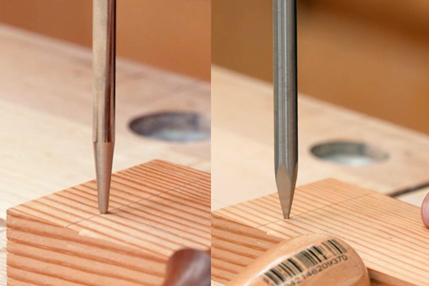
The punch awl’s tip has a conical shape, whereas that of the bradawl is pyramid shaped
Centre marker
Especially when fitting hinges and brackets, it is crucial to precisely transfer the centre of the holes in the hardware, as screws that are even slightly misaligned can be screwed in at an angle and not sit cleanly in the countersink of the hinge or bracket. This is not just a cosmetic issue; the brackets may then sit at an angle and not close correctly.
Centre markers such as DICTUM Centrofix or the Japanese Centre Marker, are inserted into the countersinks of the hardware with a cone and thus aligned in the centre of the opening. Only after this is the actual marking tip pushed out, leaving a depression in the centre of the hole into which a wood drill bit with a centring pin can be precisely inserted for drilling.


